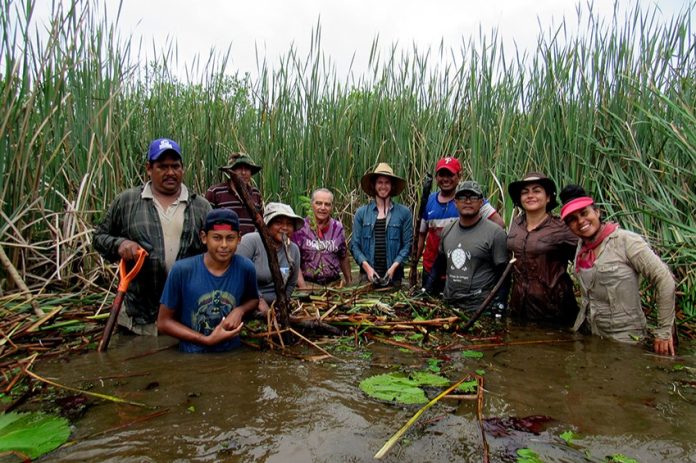REVIVE stands for Red de Viveros de Biodiversidad. It’s a network of plant nurseries dedicated to biodiversity and collaborates with at least 40 other nurseries to supply the plants, seeds, and training you need for reforesting in Mexico.
“Our team is a multidisciplinary group that was founded in Veracruz in 2020,” I was told by Aníbal F. Ramírez, REVIVE’s Executive Director.“We are not just biologists, we have computer experts, mathematicians, engineers, designers, and even a few artists as well. Humanly speaking, all of us are in love with life… and also crazy about trees.”

Although REVIVE is only five years old, Ramírez told me, its members have been working on restoring ecosystems for 19 years. When they first tried to do reforestation, he said, they would walk into a tree nursery and the conversation would go like this:
“What do you have here?”
“Pines.”
“What else?”
“More pines!”
“If we were lucky,” commented Ramírez, “the nursery might have cypresses as well as pines. That’s all. Well, pine trees may be great choices for the lumber industry, but not the best choice for regenerating a natural forest… Nevertheless, Mexico is a world leader when it comes to reforestation. If you refer to nothing but statistics, it looks like all of Mexico has been reforested 20 times over!”
Ramírez told me that Mexico has more than 8,000 native species of trees and bushes, but even today most viveros in this country offer only a choice of 80 species: one percent.
“The truth is that reforestation is popular and everyone wants to do it, but regenerating forests is a challenge. It’s a technical, economic, operative, and scientific challenge.
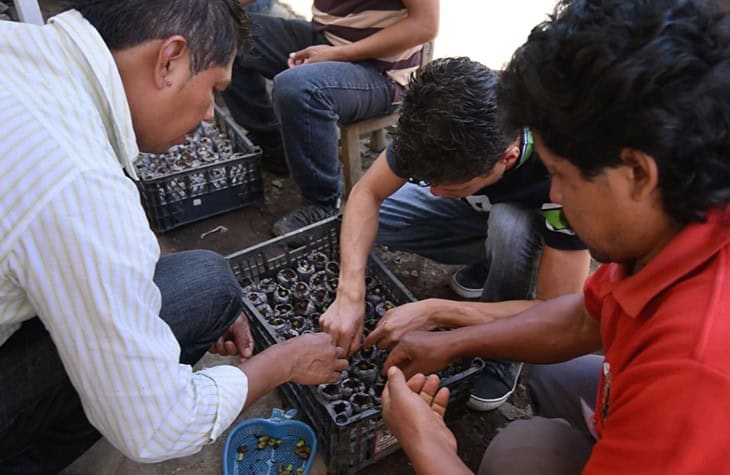
Plantations vs real forests
“It’s not just a question of getting some seedlings and putting them in the ground. The first question you have to ask yourself is: am I looking for a plantation where I can grow trees for commercial purposes or do I want to regenerate a real forest? If I choose the latter, I have to think about biodiversity, conservation, and especially the protection of water and humidity sources.”
To understand more about reforestation, Ramírez and his friends decided to consult experts in the field from across the world.
“We looked for people who have much more experience than we have,” said Ramírez. “For example, in 2012 in Colombia, we found biologists who had been reforesting mangroves for 35 years. So we could learn from people who’ve already done the job.”
Skin-grafting a forest
“In Brazil,” Ramírez told me, “we learned a technique called Topsoil Transposition. You go into a forest that is healthy, in a good state of conservation. You collect soil from there and then you put that soil in the place you want to reforest. It’s like skin grafting. If a face is burnt, you can take small pieces of skin from other parts of the body, put them on the face and these will eventually regenerate all of the facial skin. This soil transposition technique works the same way. In no time at all you see all kinds of plants appearing because that soil you transposed is what they call a genetic forest bank. It’s a microcosm of everything: seeds, fungi, bacteria, all the microorganisms. In that soil resides the memory of the ecosystem.”
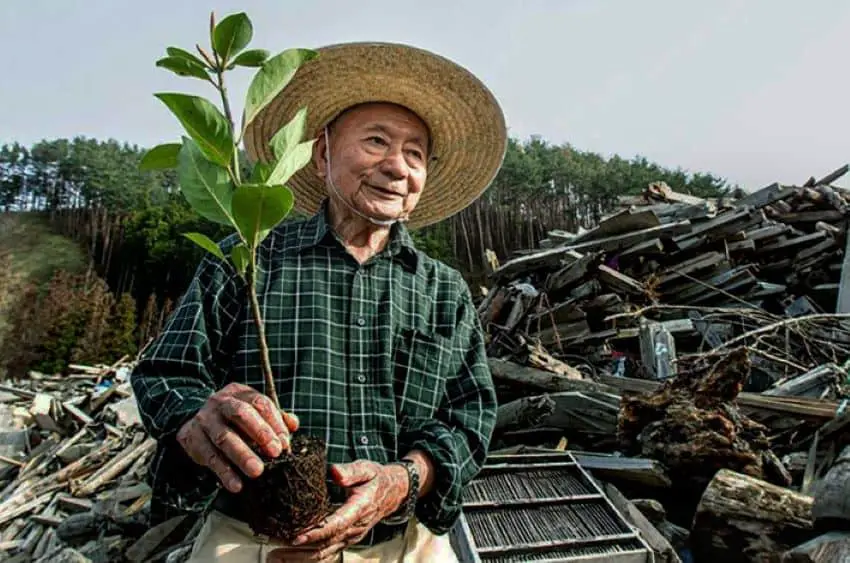
Rewilding the Miyawaki way
Another nontraditional reforestation technique tested by REVIVE is the Miyawaki method, which is based on high-density tree planting, recreating the conditions for a mature natural forest to arise within decades rather than centuries.
In the traditional approach to reforestation in Mexico, 1,100 trees are planted per hectare, but following the Miyawaki method, the number is up to 15,000 plants per hectare.
Some of these trees and plants complete their cycle of growth and death in 25 years, while others last longer and still others live for hundreds of years.
“Some trees need a lot of light,” said Ramírez, “and we call them the pioneers. But there are others, like oak trees, that need a certain amount of shade. So the Miyawaki system is to plant species of short, medium, and long life as well as species needing from a little to a lot of light. As a result, what you planted develops just like a natural forest.
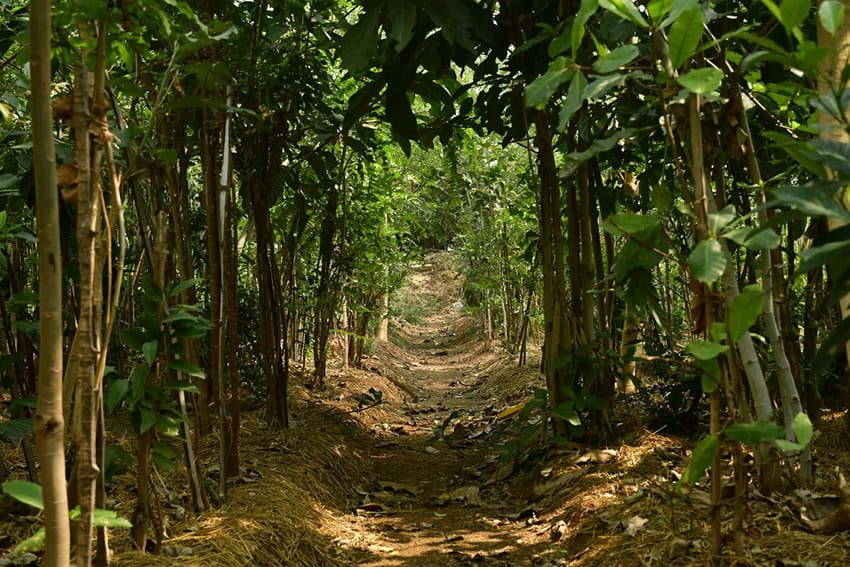
“Here in Mexico, we were among the first to adopt this method. We used it to rewild an urban park in Veracruz and in various other places where springs were drying up.”
Mangroves mean money
Our conversation turned to mangroves. All over Mexico, beachfront hotel owners have worked hard to get rid of them, but Ramírez told me that the mangrove is the most profitable of all ecosystems. Only with respect to fishing, he said, a mangrove has a value of US $35,000 per hectare per year.
“On top of that,” Ramírez went on, “there is a great market for mangrove honey. It is incredibly good, but producing it is an adventure. You have to put the bees on boats and go deep into the swamp. But mangroves produce great quantities of honey, and several industries use it, for example brewing and cosmetics.”
“We learned a lot about mangroves from the Colombians,” Ramírez continued, “but we learned even more from our own failures. For example, we had nothing but problems with regenerating mangroves until we decided to apply the Mexican chinampa system… and it took us eight years before we got it right.”
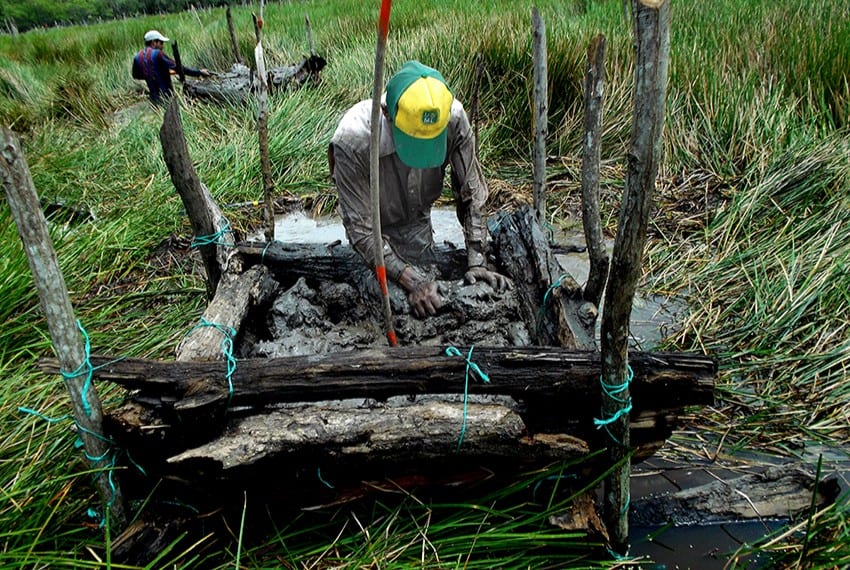
Regenerating mangroves the Mexican way
The REVIVE team discovered that mangrove seeds sprout only around the edges of the mangrove. To provide more edges and, therefore, more regeneration, they created cores of “mini chinampas” just one square meter in size.
“This, said Ramírez, “we called ‘The Edge Effect,’ and in seven years we went from mini chinampas to total coverage.”
Want to rewild your backyard? You’ll find much more than pine trees at a REVIVE nursery. “We can now supply you with seeds for 400 species,” says Aníbal Ramírez, with a smile, “and lots of advice.”
John Pint has lived near Guadalajara, Jalisco, for more than 30 years and is the author of A Guide to West Mexico’s Guachimontones and Surrounding Area and co-author of Outdoors in Western Mexico. More of his writing can be found on his website.
